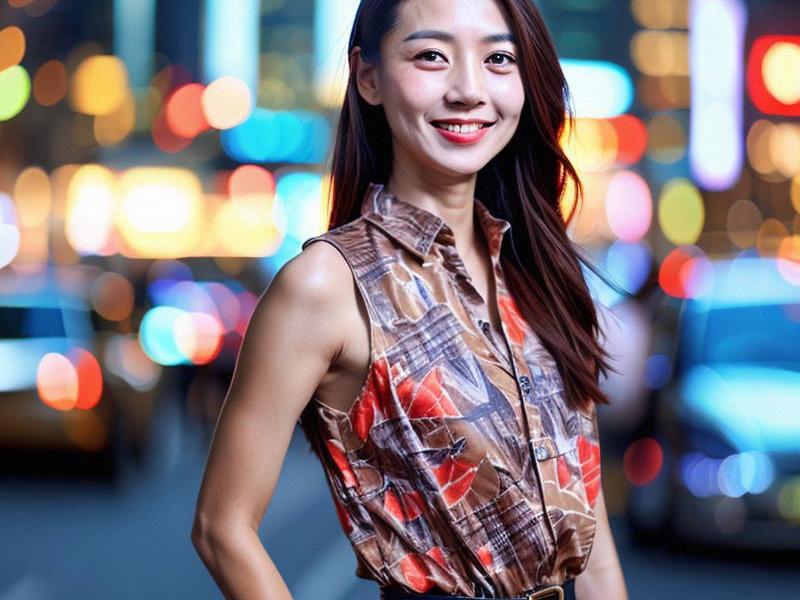This article explores Shanghai's unique position as a global cultural hub, examining its blend of traditional Chinese heritage and cutting-edge modernity. From historic neighborhoods to world-class museums and a thriving contemporary art scene, Shanghai showcases the perfect fusion of East and West.

Shanghai: A Vibrant Cultural Hub Where East Meets West
In the heart of China's eastern coast stands Shanghai - a metropolis that has transformed itself from a small fishing village into one of the world's most dynamic cultural centers. With its unique position as China's most international city, Shanghai seamlessly blends centuries-old traditions with cutting-edge contemporary culture, creating a vibrant tapestry that attracts visitors and artists from around the globe.
Historical Foundations
Shanghai's cultural richness begins with its remarkable history. The city's International Settlements, established in the 19th century, left an indelible mark on its urban landscape and cultural identity. The Bund, with its iconic colonial-era buildings, stands as a testament to this era when Shanghai was known as the "Paris of the Orient." These historical structures now house museums, art galleries, and cultural institutions that preserve and reinterpret Shanghai's complex past.
The French Concession, another historical neighborhood, offers tree-lined streets, colonial architecture, and a bohemian atmosphere that has become a haven for artists and creatives. Today, this area hosts numerous galleries, boutique shops, and cultural spaces that contribute to Shanghai's thriving arts scene.
Traditional Arts and Modern Interpretations
While Shanghai embraces modernity, it remains deeply connected to its cultural roots. The city is home to numerous institutions dedicated to preserving traditional Chinese arts. The Shanghai Museum, located in People's Square, houses one of the finest collections of Chinese art in the world, including ancient ceramics, calligraphy, and paintings.
Contemporary artists in Shanghai are reinterpreting traditional forms with modern techniques and themes. The Power Station of Art, China's first state-run contemporary art museum, showcases this dynamic fusion. Housed in a converted power plant, this museum has become a focal point for experimental art that bridges China's artistic heritage with global contemporary practices.
上海花千坊龙凤
Architectural Harmony
Shanghai's skyline perfectly illustrates its cultural duality. The Oriental Pearl Tower and Shanghai Tower represent the city's futuristic ambitions, while the Jade Buddha Temple and Longhua Temple maintain ancient spiritual traditions. This architectural harmony extends to residential areas where traditional shikumen (stone gate) houses coexist with sleek modern apartments.
The Xintiandi district exemplifies this blend, transforming historic shikumen buildings into fashionable restaurants, cafes, and shops while preserving their original architectural character. This successful fusion of old and new has made Xintiandi a model for urban renewal projects worldwide.
Culinary Crossroads
Shanghai's culinary scene serves as another vibrant expression of its cultural hybridity. The city's signature dishes, like xiaolongbao (soup dumplings) and sweet-and-savory red-braised pork, reflect centuries of culinary tradition. Meanwhile, international restaurants offering everything from Michelin-starred French cuisine to authentic Ethiopian food demonstrate Shanghai's global outlook.
Food markets like the Shanghai Century Mart and the newly developed Tianzifang Food Street provide spaces where traditional vendors and international chefs interact, creating a dynamic food culture that constantly evolves while respecting its roots.
Festivals and Public Life
上海花千坊龙凤
Shanghai's calendar is filled with cultural events that celebrate both local traditions and international influences. The Shanghai International Film Festival, one of Asia's most prestigious film events, attracts filmmakers and celebrities from around the world. The Shanghai Biennale, held at the Power Station of Art, has become a major contemporary art event in the Asia-Pacific region.
Traditional festivals like the Shanghai Lantern Festival and the Dragon Boat Festival are celebrated with contemporary twists, often incorporating modern technology and international participation. These events showcase Shanghai's ability to honor its heritage while embracing global cultural exchange.
Educational Institutions and Cultural Exchange
Shanghai's universities and cultural institutions play crucial roles in fostering cross-cultural understanding. Fudan University and Shanghai Jiao Tong University host numerous international exchange programs, while institutions like the Shanghai Conservatory of Music attract talented musicians from around the world.
The city's network of foreign consulates, international schools, and cultural centers (including the Institut Français, Goethe-Institut, and Confucius Institute) creates a multicultural environment that facilitates constant cultural exchange.
Contemporary Cultural Production
Shanghai's contemporary cultural scene is thriving. The city has become a hotspot for fashion design, with local designers gaining international recognition. The annual Shanghai Fashion Week showcases both established and emerging talent, blending traditional Chinese elements with modern aesthetics.
上海娱乐联盟
The music scene is equally vibrant, with venues like the Mercedes-Benz Arena hosting world-class performers while smaller clubs nurture local talent across genres from jazz to electronic music. The city's growing indie music scene has gained attention for its unique fusion of Western influences with Chinese lyrical themes.
Challenges and Future Directions
Despite its cultural richness, Shanghai faces challenges in balancing rapid urban development with heritage preservation. The city government has implemented measures to protect historical buildings while promoting cultural industries as a key sector of economic growth.
Looking ahead, Shanghai aims to strengthen its position as a global cultural hub through initiatives like the "Shanghai Cultural Brand" development plan, which seeks to promote Chinese culture internationally while continuing to attract global talent and investment.
Conclusion
Shanghai's cultural landscape represents one of the most successful examples of East-West synthesis in the modern world. From its historical neighborhoods to its cutting-edge art institutions, the city demonstrates how tradition and innovation can coexist and mutually enrich each other. As Shanghai continues to evolve, its cultural scene promises to remain a dynamic space where global influences meet Chinese heritage, creating new forms of artistic expression that resonate both locally and internationally.
The city's ability to honor its past while embracing the future makes it not just a cultural hub within China, but a vital node in the global cultural network. For residents and visitors alike, Shanghai offers a constantly evolving cultural experience that reflects the best of both Chinese tradition and global modernity.